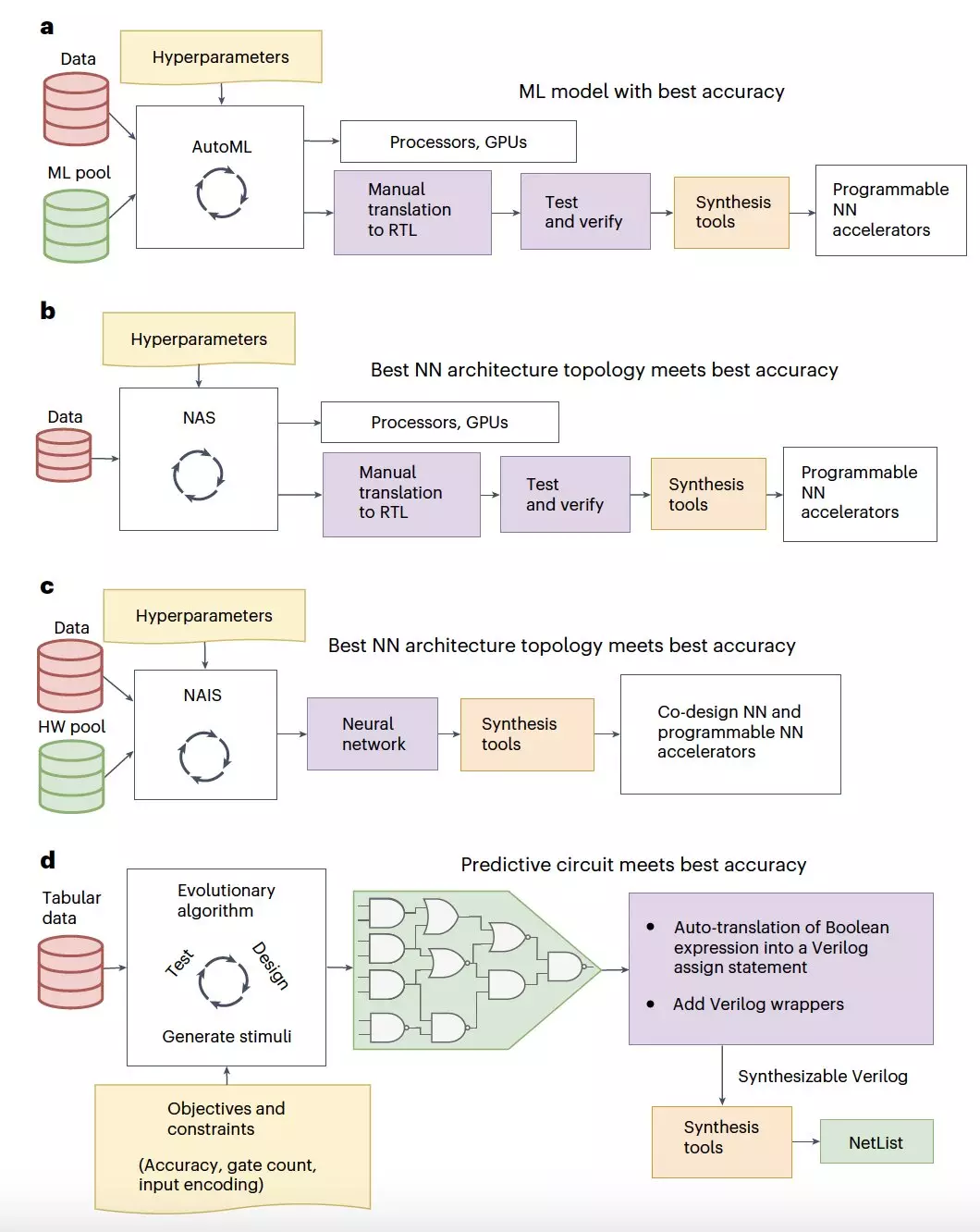Deep learning techniques have seen significant advancements in recent years, with the ability to achieve human-level accuracy on various tasks such as image classification and natural language processing. As a result, researchers have been exploring new hardware solutions to cope with the high computational requirements of these techniques. One approach that has been gaining attention is the development of hardware accelerators, specialized computing devices designed to enhance the efficiency of specific computational tasks compared to traditional CPUs.
Tiny Classifier Circuits
A recent study by researchers at the University of Manchester and Pragmatic Semiconductor introduced a machine-learning-based method to automatically generate classification circuits from tabular data, a form of unstructured data that combines numerical and categorical information. These circuits, known as “tiny classifiers,” consist of only a few hundred logic gates yet deliver comparable prediction performance to state-of-the-art machine learning classifiers. The researchers used an evolutionary algorithm to search through the space of logic gates and maximize training prediction accuracy while limiting the circuit to no more than 300 logic gates.
In simulations, the tiny classifier circuits showed promising results in terms of accuracy and power consumption. When implemented as a silicon chip, the circuits were found to use significantly less area and power compared to traditional machine learning baselines. Additionally, the researchers validated their performance on a real, low-cost integrated circuit, demonstrating even greater improvements in area, power consumption, and yield.
The potential applications of tiny classifier circuits are vast. These circuits could be utilized as triggering circuits on chips for smart packaging and monitoring of goods, as well as for the development of low-cost near-sensor computing systems. Their efficiency and compact size make them suitable for a wide range of real-world tasks, opening up new possibilities in the field of deep learning.
The research done on tiny classifier circuits represents a significant step towards improving the efficiency and performance of deep learning models. By combining machine learning techniques with hardware design, researchers have created a novel solution that offers comparable accuracy with fewer resources. The potential impact of these circuits extends to various industries, promising advancements in technology and enabling innovative applications in the future.


Leave a Reply